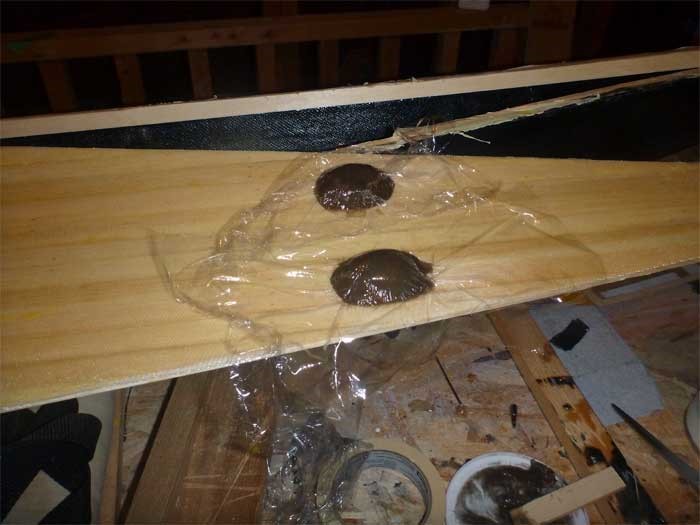Deck fittings with a new twist
Wednesday, March 28, 2012, 7 comments

Sean Dawe in Canada is building a Black Pearl. You can follow the project in words and pics on his site. A couple of days ago he shared an idea of modified deck fittings à la Gerald Maroske (a molded recessed channel, built with tubing as mold).
Bondo Hair (what a name ;-) is to my knowledge not available in Sweden, but other brands of similar goo are. One, Biltema's version, is touted as containing long glass fibres, the other does not mention this. None of them seems to be water tight, and may need an epoxy layer to perform as advertised.
Possible advantage is speed: one filler instead of epoxy plus a number of cloth pieces, and that it cures in 20 minutes instead of overnight. Disadvantages are a loss of strength compared to epoxy/fiberglass (but likely strong enough) and the smell.
Petrus in Tranås have a similar approach: covers the tube in thickened epoxy (microfiber or sanding dust)gör på liknande sätt: packar in slangen i förtjockad epoxy (microfiber, slipdamm eller liknande) and seals it with a layer of cloth.

